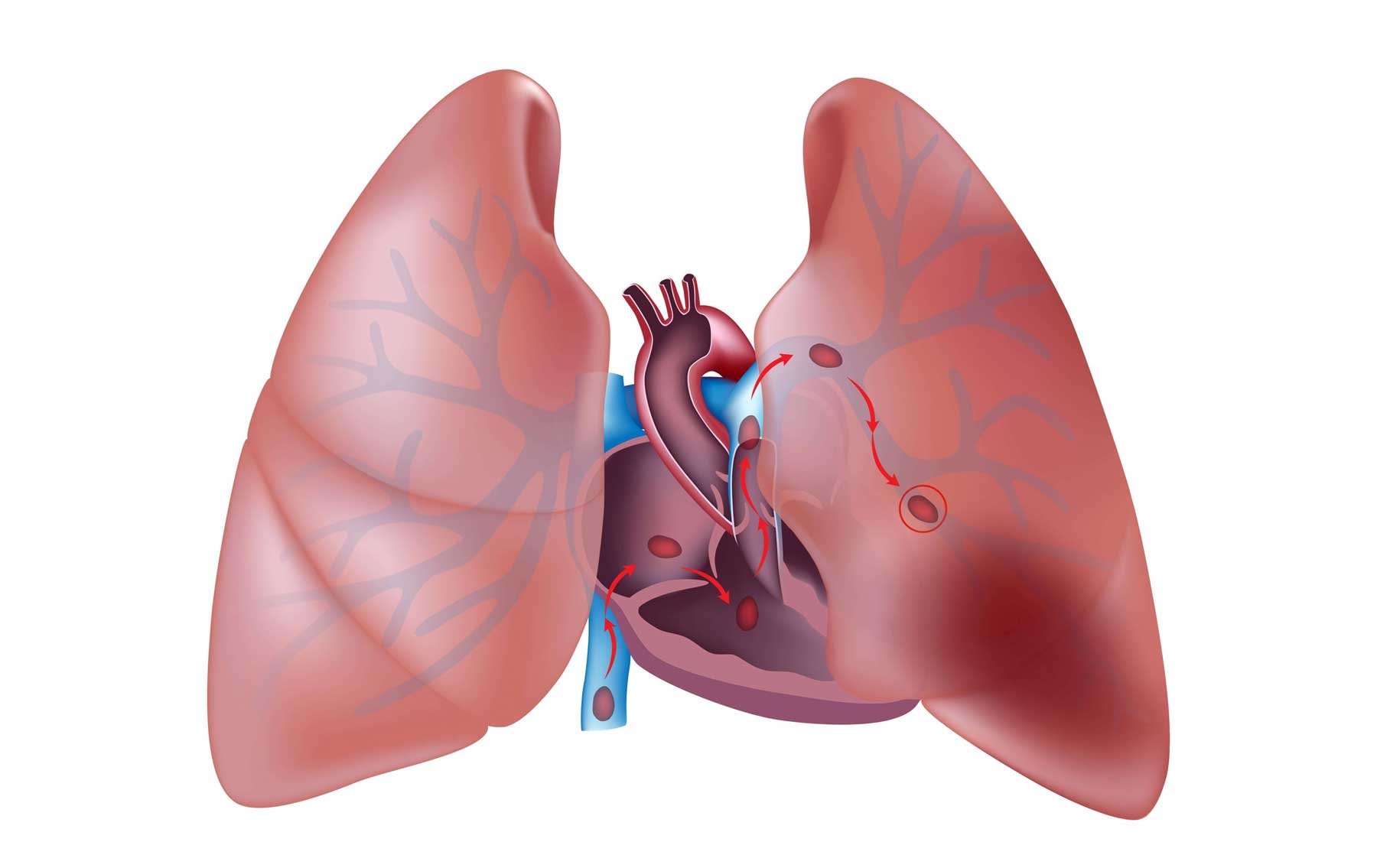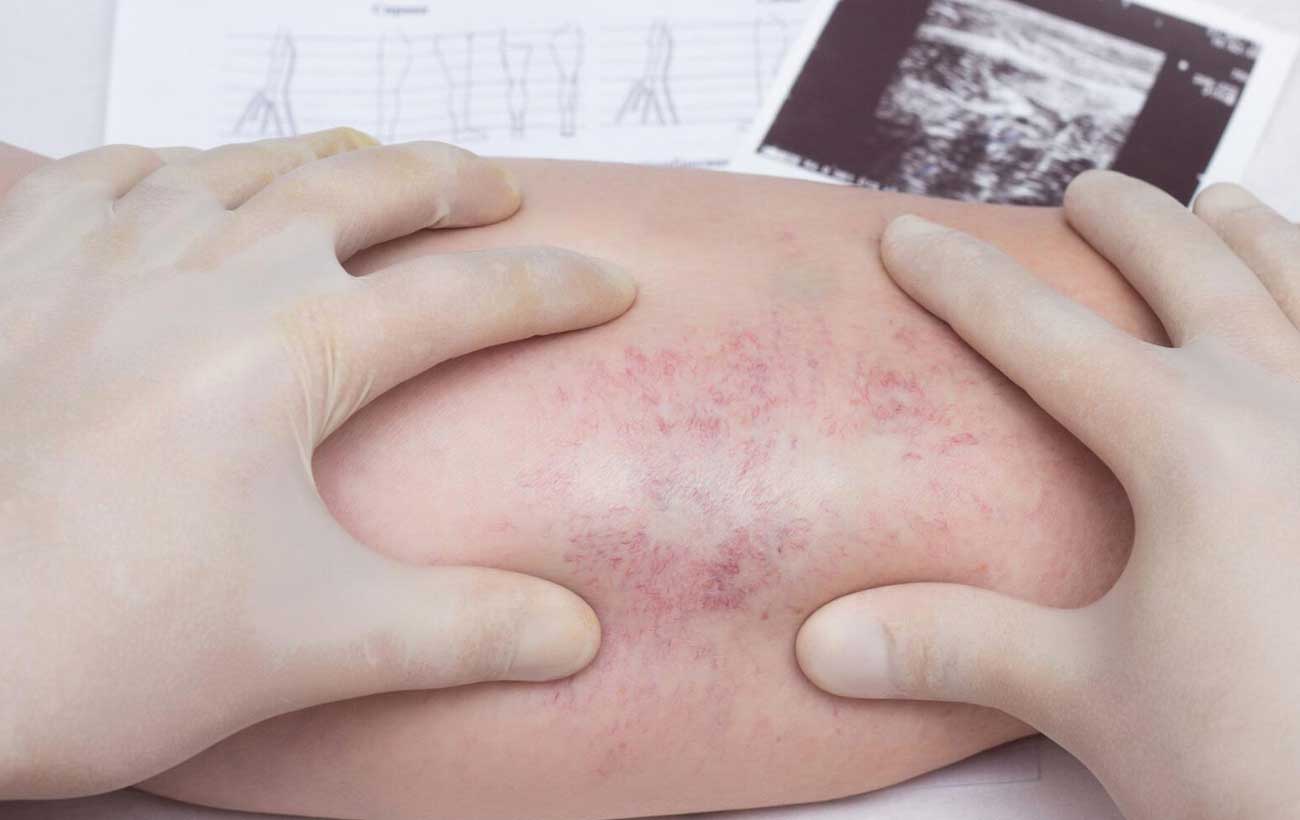Deep Vein Thrombosis Thrombosis is the formation of a blood clot (thrombus), which can partially…

Pulmonary Embolism
Pulmonary embolism usually occurs as a serious complication of deep vein thrombosis. A blood clot detaches from the wall of a deep vein and moves into the bloodstream, through the heart, and through the pulmonary artery to the lungs. If the loose clot (called an embolus) is large, it can lodge in an artery inside the lungs and block blood flow to the lungs. If most of the pulmonary artery is obstructed, the right ventricle of the heart is forced to pump harder, which can lead to heart failure. The obstruction reduces the volume of freshly oxygenated blood returning to the left side of the heart. If the volume of blood is reduced significantly, shock can result. A pulmonary embolism can be fatal.
The condition affects women more frequently than men. People who are confined to bed, especially after pelvic surgery or surgery involving the hip or knee, are at increased risk.
Symptoms
Symptoms of pulmonary embolism depend on the size of the embolus and its location in the lungs. Because the heart and tissues are not getting enough oxygen, the main symptom is usually shortness of breath. The person may also feel faint and have chest pain when inhaling. Other possible symptoms include a cough, bloody phlegm, and cyanosis (a bluish tinge) around the mouth.
Any blockage of blood flow to the lungs can lead to heart failure. If a large pulmonary embolism causes the circulatory system to stop functioning, death usually occurs within minutes.
Treatments
If you have a pulmonary embolism, you will need to be hospitalized for treatment with anticoagulants (blood thinners) and possibly thrombolytic drugs (clot busters). Heparin, an anticoagulant, helps prevent more blood clots from forming in your lungs and veins. The drug is infused directly into a vein. Occasionally, thrombolytic drugs such as streptokinase or tPA (tissue plasminogen activator) are used to help dissolve blood clots in the lungs. Because treatment with the combination of thrombolytic and anticoagulant drugs carries a risk of internal bleeding, your doctor will closely monitor the ability of your blood to clot normally.
American Medical Association Family Medical Guide



